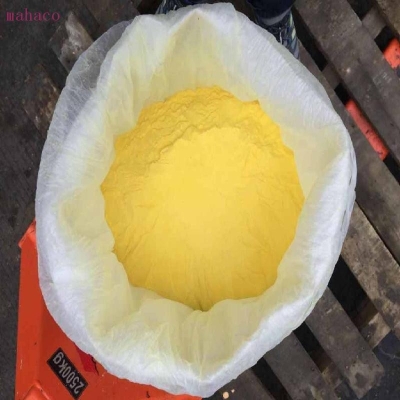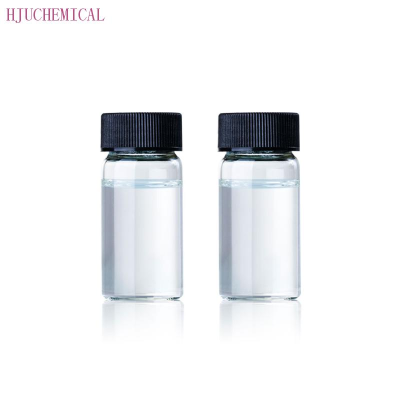-
Categories
-
Pharmaceutical Intermediates
-
Active Pharmaceutical Ingredients
-
Food Additives
- Industrial Coatings
- Agrochemicals
- Dyes and Pigments
- Surfactant
- Flavors and Fragrances
- Chemical Reagents
- Catalyst and Auxiliary
- Natural Products
- Inorganic Chemistry
-
Organic Chemistry
-
Biochemical Engineering
- Analytical Chemistry
- Cosmetic Ingredient
-
Pharmaceutical Intermediates
Promotion
ECHEMI Mall
Wholesale
Weekly Price
Exhibition
News
-
Trade Service
[ Focus on Chemical Machinery and Equipment Network ] Fugitive dust control is one of the main sections of air pollution control, but there are still some differences in the treatment of road dust, construction dust and industrial dust.
Chemical machinery and equipment network hotspots pay attention to chemical machinery and equipmentIndustrial dust stripping generally uses industrial dust collectors or other industrial dust removal equipment , and adds dust removal processes in the waste gas treatment link to meet environmental protection standards.
At present, some mainstream industrial dust removal technologies include biological nano-film dust suppression, cloud dust suppression, wet dust collection, bag dust removal, electrostatic dust removal, etc.
Dust removal equipmentAt present, some mainstream industrial dust removal technologies include biological nano-film dust suppression, cloud dust suppression, wet dust collection, bag dust removal, electrostatic dust removal, etc.
As far as the industry is concerned, taking steel plants as an example, the proportion of dust in their exhaust emissions is quite high, reaching about 10% or even 12% of the output of steel products.
The electrostatic precipitator is more commonly used in major steel plants, which has a large amount of flue gas and high dust removal efficiency.
It is widely used in the primary dust removal of converter gas, thermal power plants, and sintering processes.
The electrostatic precipitator is more commonly used in major steel plants, which has a large amount of flue gas and high dust removal efficiency.
It is widely used in the primary dust removal of converter gas, thermal power plants, and sintering processes.
However, industry experts have also pointed out that the dust collectors currently used in steel plants urgently need to be updated to meet the increasingly stringent environmental emission standards.
As far as the technology itself is concerned, wet dust removal, bag dust removal, and electrostatic dust removal methods are used more, and they have been continuously optimized in recent years.
For example, the high-voltage pulse dust collector is a new generation solution to solve the problems of low corona voltage and anti-corona phenomenon in the traditional electrostatic precipitator, and it improves the dust removal efficiency and reduces the energy consumption.
For example, the high-voltage pulse dust collector is a new generation solution to solve the problems of low corona voltage and anti-corona phenomenon in the traditional electrostatic precipitator, and it improves the dust removal efficiency and reduces the energy consumption.
The high-voltage pulse dust collector can reduce the dust discharge rate by about 90% compared with the constant voltage power supply, and the energy consumption can be reduced by about 80%, so the industrial application promotion value is very high.
This new type of dust removal technology, due to its small size, good effect, low cost, and low energy consumption, has begun to replace old-fashioned dust collectors in more and more fields.
This new type of dust removal technology, due to its small size, good effect, low cost, and low energy consumption, has begun to replace old-fashioned dust collectors in more and more fields.
Speaking of energy saving, energy consumption optimization of industrial dust removal systems is also a hot research direction in this field.
System air volume and system resistance are the key parameters for the selection of dust removal system equipment, and they are also the main energy-saving optimization points.
From the point of view of practical application, the optimization goal can be achieved by means of reasonable unloading methods, reducing the amount of material lift, controlling the dust flow speed, sealing and valve selection, etc.
System air volume and system resistance are the key parameters for the selection of dust removal system equipment, and they are also the main energy-saving optimization points.
From the point of view of practical application, the optimization goal can be achieved by means of reasonable unloading methods, reducing the amount of material lift, controlling the dust flow speed, sealing and valve selection, etc.
This is also a test of design and innovation capabilities.
In addition to energy saving, there are many optimization directions for industrial dust removal systems, and new types of equipment are emerging in endlessly.
For example, the above-mentioned high-pressure pulse dust collector, as well as the annular jet bag filter, the downstream jet bag filter, the gas gyro industrial dust collector, the coal unloading and storage mechanical dust removal equipment, etc.
, each has its own advantages.
For example, the above-mentioned high-pressure pulse dust collector, as well as the annular jet bag filter, the downstream jet bag filter, the gas gyro industrial dust collector, the coal unloading and storage mechanical dust removal equipment, etc.
, each has its own advantages.
The key to industrial dust removal is tailor-made, including the selection of dust removal equipment, the combination of waste gas treatment processes, and intelligent control, so as to improve dust removal efficiency and achieve emission standards.
Original title: How does the industrial dust removal process catch up with the increasingly stringent environmental emission standards?







